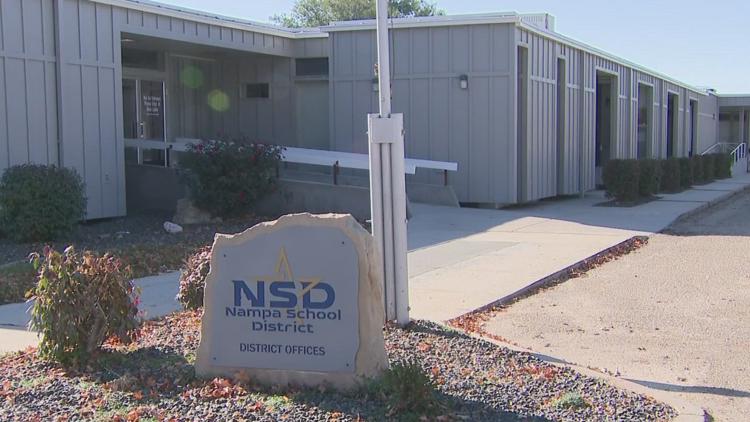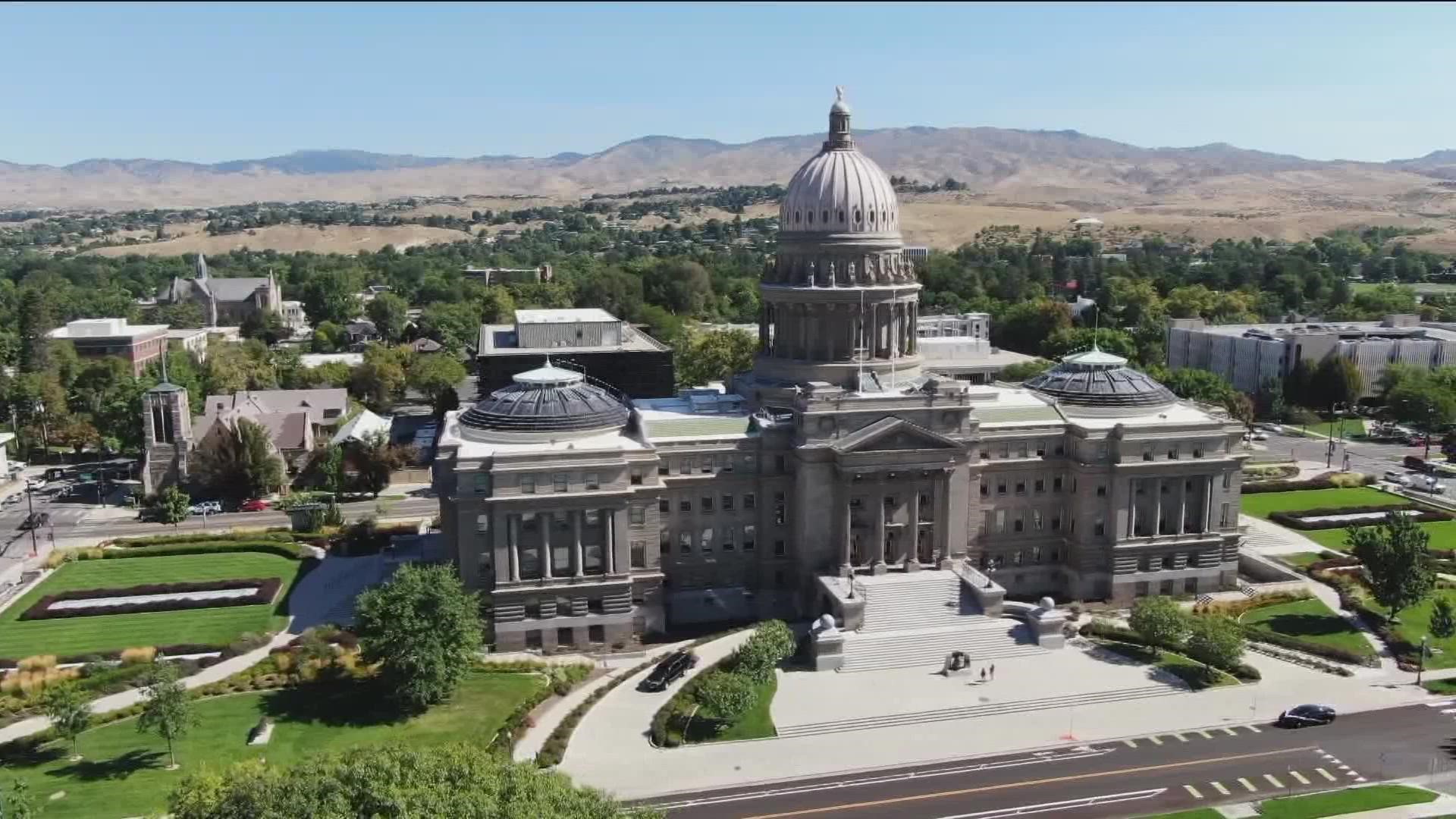NAMPA, Idaho — This article originally appeared in the Idaho Press.
In a cost-saving effort amid declining enrollment and a growing backlog of repairs and upgrades, the Nampa School District has proposed school mergers, closures and demolitions. This would result in the closure of the following schools:
- West Middle School
- Central Elementary
- Snake River Elementary
- Centennial or Greenhurst Elementary
An emotional showing at a Dec. 20 town hall had over 20 community members give remarks against proposed closures. Even more were in attendance.
Nampa’s school board will further discuss the closures at its Monday meeting. While the district has asked the board to come to a decision at this meeting, trustees could postpone the vote.
TIMELINE AND TOWN HALL DISCUSSIONS
At the town hall, many expressed that the decision to close four schools seemed rushed. Board of Trustees Vice Chair Jeff Kirkman disagreed and said that discussions have been going on for many years.
“I would ask, why hasn’t everyone been a part of the conversation for years and years?” Kirkman said at the town hall. “They’ve all been public meetings.”
While the process of looking at enrollment and evaluating buildings has been ongoing since 2018, the specific proposal of closing schools was first brought up in July 2022, according to Nampa School District Superintendent Gregg Russell.
“It's been a while,” Russell said.
Since then, Russell said the district has made an effort to inform the public of the proposal. The proposal was addressed at public board meetings and on social media.
Russell said it was also discussed when promoting a $210.2 million bond that failed to pass in March.
“I don’t know what else we could have done,” Russell said about making people aware.
Community members also expressed concerns that all five of the schools being considered for closure are Title 1 — schools that are federally recognized as hosting lower-income students. Board members also expressed concerns about this, with trustees saying they were unaware of this status.
Russell explained that every elementary school in the NSD is a Title 1 school. In fact, the majority of schools in the district are.
“The district really understands where the community was coming from and understood what that meant to those community members,” Russell said.
Another topic of discussion at the town hall was the label of Central being a trauma-informed school.
Russell attributed this to training done following the COVID-19 pandemic, with 11 schools receiving this training. The training showed teachers how to quantify trauma and work with the adverse experiences that students have gone through.
As for programming and resources at the schools that may close, Russell said many will go with students to their new schools. The goal is to not leave a vacuum. Most of the buildings will be re-utilized for other students, and resources can remain there as well.
“A couple of those schools, as we look at repurposing them, we still would provide a lot of the services that are there,” Russell said. “You would just instead have an elementary school that’d be a preschool, and in fact, it could even benefit some of our families.”
While community members may feel a loss if schools close, Russell opted to look to the students who would benefit.
“Obviously you put your heart and soul into a place. … It’s hard to see that happen,” he said. “But you have to look at all schools, all kids and what’s in their best interest moving forward.”
LOW ENROLLMENT AND OLD BUILDINGS
Schools were selected for the proposed closures based on low enrollment, smaller buildings and deteriorating buildings. Much of this was based on a process that began several years back, with the NSD looking to other districts on how to best project enrollment.
“We never looked at the future,” Russell said about previous data analysis.
After evaluating the area’s birth rates, housing costs and historical enrollment, data was shared with the 2018 school board.
Russell said they were surprised to see how greatly enrollment was expected to decline.
“We saw these projections that were either flat or going to go down,” he said.
This year, Russell said enrollment projections were off by quite a bit, with a larger decrease in numbers than expected.
Taking the same proactive approach, the district turned to its maintenance.
In 2018, the district had a third party evaluate buildings’ conditions. The estimates for deferred maintenance were more than expected. Supplies like windows cost a lot and the buildings had age-related issues.
“Those types of costs are just shocking to see,” Russell said. “There was also a kind of affirmation … we knew that some of those buildings were starting to age.”
Union High School’s current building, formerly home of Sunny Ridge Elementary, was built in 1969. The Gateways Program is located in the former Lincoln Elementary, built in 1952. Centennial Elementary was built in 1975 and Greenhurst Elementary was built in 1989.
If closures are to proceed, the board will have to decide between closing Centennial and Greenhurst.
While Centennial is in decent condition, the school’s open concept presents a safety concern with a lack of doors. This was one of the projects the district had hoped to address in March’s bond that did not pass.
Greenhurst has had issues with mold, seepage and broken water mains in its parking lot.
SAVINGS AND ALTERNATIVES
The closure of the three buildings that would be decommissioned would save the district $600,000 annually. This money would be reinvested with a focus on the long-term budget and maintenance, according to the NSD.
The district would also be able to defer $27 million in maintenance to be done at a later year. Fewer schools would also mean spending less on janitorial services, power and water.
There would be cost savings from reducing staff, but that is not the intent of the mergers, Russell said.
According to Russell, most staff would be able to relocate with students and continue their positions. Still, one-time positions such as principals and office staff can’t be duplicated.
Not accounting for retirements or added circumstances, Russell estimated six staff members per elementary would be laid off and 10 staff at West Middle School, totaling 26 employees across the district.
As far as alternatives, “I think we’ve looked at every option that we really can,” Russell said.
The district has looked at options for several years, assigning a committee to find solutions.
“It’s not (a decision) that we made quickly, it’s not something that we made in isolation,” Russell said.
A proposal the community has continued to consider is moving high schools to four-day school weeks instead of five. Russell said most costs would still be there and it just wouldn’t save as much as closing schools.
Rather than being alternatives, changes to schedules and dipping into savings could be considered as additional measures to save more money.
As the district’s population continues to decline, Russell said closing schools seems to be the best option moving forward.
FEDERAL AND STATE FUNDS
While the district’s most recent levy passed in the November election, going into effect in July 2024, the funds are simply a replacement of a previous levy. Of the $14.78 million levy, only $2 million goes toward maintenance projects.
Without it, Russell said the district would have faced even harsher cutbacks.
Some pandemic-related funds, Federal Elementary and Secondary School Emergency Relief funding, will end in September 2024 and result in a loss of $3.5 million annually, according to the NSD.
Russell said these funds were limited in use, as projects had to be related to the COVID-19 pandemic. Maintenance was largely limited to updating ventilation systems.
In addition, rather than enrollment-based funding, the state has reverted to ADA — average daily attendance funding. According to the NSD, this has resulted in a loss of $5.5 million annually.
“If you have 100 kids, you need staff for 100,” Russell said.
Based on the attendance-based funding, if only 90 students show up to school, the district will only receive funding for those 90. Russell said Idaho is one of the few states that utilizes ADA.
“What makes schools hard is you’re dealing with human beings, and human beings are complicated,” he said.
The district receives $1.2 million annually from the state for maintenance, which barely covers costs. In the case of East Valley Middle School, where the facility needs a new roof, the estimated cost is $1.6 million.
“There isn’t a lot of funding,” Russell said.
With 25 other buildings to consider and increased construction costs, due to inflation and supply, there is still a large gap in funding.
“The dollars don’t go as far as they used to,” Russell said.
This article originally appeared in the Idaho Press, read more on IdahoPress.com.
Watch more Local News:
See the latest news from around the Treasure Valley and the Gem State in our YouTube playlist:
HERE ARE MORE WAYS TO GET NEWS FROM KTVB:
Download the KTVB News Mobile App
Apple iOS: Click here to download
Google Play: Click here to download
Watch news reports for FREE on YouTube: KTVB YouTube channel
Stream Live for FREE on ROKU: Add the channel from the ROKU store or by searching 'KTVB'.
Stream Live for FREE on FIRE TV: Search ‘KTVB’ and click ‘Get’ to download.



